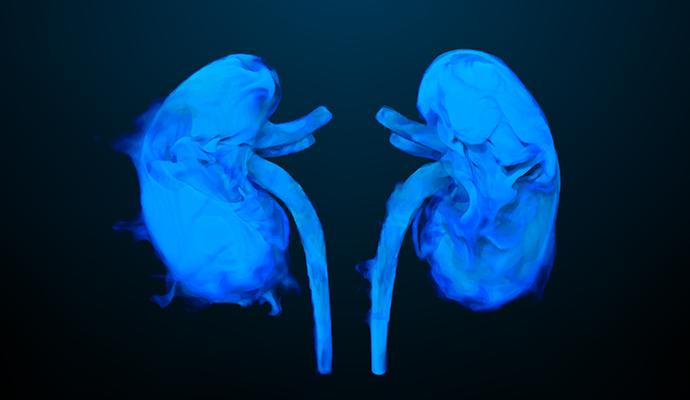Data Analysis Reveals Risks of Prolonged Continuous Kidney Therapy
A review of more than a thousand patient records indicates that current clinical decision-making about kidney therapy can lead to poor patient outcomes.

Source: Getty Images
- Mayo Clinic researchers analyzing patient records found that individuals with acute kidney injury receiving continuous renal replacement therapy (CRRT) once are likely to require the therapy again, leading to poor patient outcomes.
Although CRRT is a common dialysis method for critically ill patients with acute kidney injury, there is little research concerning when to liberate patients from CRRT to support kidney function recovery.
In the retrospective cohort study, researchers examined the data records of 1,135 patients with acute kidney injury who were treated with CRRT at Mayo Clinic in Rochester between January 2007 and May 2018. Of those patients, 20 percent were successfully liberated from CRRT. In 39 percent of patients, CRRT had to be reinstated within 72 hours, and 41 percent of those patients died.
According to the researchers, successful CRRT liberation seems to be associated with fewer major adverse kidney events and improved kidney function at the time of 90-day follow-up.
“In current clinical practice, CRRT liberation is typically based on physicians’ personal experience because there has been only limited and inconsistent research available,” the study’s senior author Kianoush Kashani, MD, a nephrology intensivist at Mayo Clinic, said in a press release.
“Our study demonstrated a high occurrence of CRRT liberation failure, as well as poor 90-day outcomes. Thus, there is a critical need for identifying preventive measures to avoid the need for CRRT or interventions that lead to early liberation from CRRT among critically ill patients with advanced acute kidney injury.”
Acute kidney injury is a common complication for patients in intensive care units (ICU). According to researchers, as many as 57 percent of ICU patients have acute kidney injury. Dialysis is used to treat around 13 percent of those patients; however, it is also associated with a 60 percent mortality rate.
“There are limited data and little consensus on how and when to liberate patients from CRRT properly,” Kashani said. “The high rate of liberation failure observed in our study may reflect variations in clinical practices. Development of consistent approaches that can guide decision-making on when to remove CRRT should be a top priority of future research.”
CRRT is frequently used as a dialysis mode for critically ill patients because it supplies continuous control of fluid status during treatment and does not interfere with the body’s normal blood flow while achieving uremic control.
However, recent studies have indicated that prolonged CRRT could lead to adverse events and hinder kidney function recovery, while premature CRRT liberation could also cause complications. Other dialysis options offer even lower changes in kidney recovery, according to Kashani.
When done correctly, CRRT liberation is associated with improved clinical patient outcomes while also lowering the cost of care. To continue improving the quality, research should focus on using predictive models to identify higher-risk patients for liberation failure, allowing for a physician-patience discussion about treatment options.
